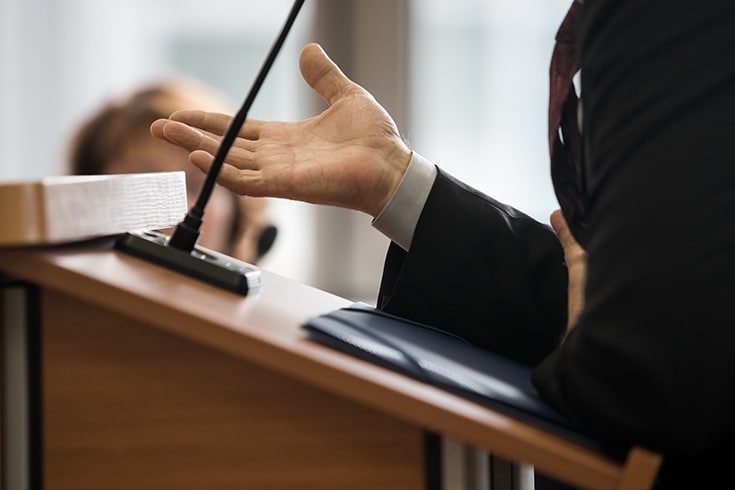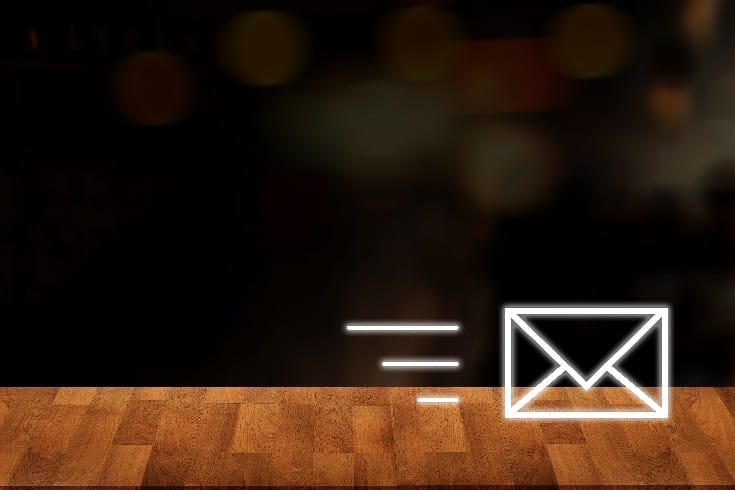How Much is the Going Rate for Damages in Cases of Portrait Rights Infringement? An Explanation Based on Two Precedents

If your personal appearance or posture is photographed and published without your consent, there may be cases where you can claim damages for infringement of portrait rights, which is a part of the right to privacy.
Portrait rights are generally considered to be the “right not to have one’s appearance, etc., photographed and published without due cause”.
In this article, we will explain what constitutes an infringement of portrait rights and how much the average compensation for emotional distress is, based on actual cases.
For more information on the relationship between portrait rights and privacy rights, and the process of claiming damages for infringement of portrait rights, please refer to the article below.
https://monolith.law/reputation/portraitrights-onthe-internet[ja]
Case of Publishing a Photo in a Gown Inside a Room

A weekly magazine’s photographer took a picture of the plaintiff, who is the chairman of a newspaper company, in a gown inside his home and published the photo in the magazine.
The plaintiff claimed that the unauthorized photography and publication of his appearance and posture violated his privacy. He demanded the publisher and editor-in-chief of the magazine to stop publishing the photo, publish an apology advertisement, and pay consolation money based on tort law.
Course of the Lawsuit
The plaintiff, who was the owner of a baseball team, resigned as the owner when it was revealed that the team’s scout had given about 2 million yen in cash to a college baseball team’s pitcher they were aiming to acquire at the draft meeting.
However, the plaintiff did not attend the press conference about his resignation and did not hold his own press conference about the reasons for his resignation. Furthermore, he did not accept any interviews, so his whereabouts became a matter of national interest.
Under these circumstances, three photos were published in the weekly magazine. Two of them were taken with a telephoto lens from a promenade adjacent to the apartment where the plaintiff lived, showing the plaintiff in a gown inside his room.
The photos were published with comments such as “Mr. XX, who is disheartened by his resignation as owner,” and headlines such as “The End of a One-Man Show,” along with a front-facing upper body shot of the plaintiff and a side-facing upper body shot of the plaintiff.
Plaintiff’s Claim
The plaintiff argued that photos of one’s appearance and posture while relaxing in a gown inside a room are something that no one would want to be made public. He claimed that if such photos were made public, it would infringe on his right to privacy, as he would not be able to maintain a peaceful personal life.
Defendant’s Rebuttal
The defendant argued, “The plaintiff, as the chairman of a company that owns numerous TV and radio stations and other related companies, is a highly public figure who is well aware of the media industry. He was well aware of the potential for his home to be photographed and the methods of coverage that could be used. Despite knowing that the full-length glass windows of his room were in a position where he could be easily photographed by the press, he did not ask the press to leave or protest against the photography. On the day in question, he did not close the curtains and repeatedly walked near the windows, standing by the windows and looking at the press. Given these circumstances, the defendant argued that the plaintiff, as a public figure, had lost some of his privacy rights, and that the violation of privacy was either implicitly consented to or waived by the plaintiff, thereby negating the illegality.”
Judgment of the Court

First, the court expressed a general view that the right not to have one’s appearance and posture photographed and published without consent is a personal interest that should be legally protected. On this basis, the court made the following statement:
“Especially in one’s own home, where one is shielded from the gaze of others and released from social tension, the appearance and posture in such a vulnerable state is something that everyone does not want to be made public. It should be respected to the utmost as a personal interest and should receive legal protection as privacy.”
Tokyo District Court, October 27, 2005 (Heisei 17)
Having affirmed the violation of privacy, the issue in this case was whether the plaintiff had implicitly consented to the violation of privacy or had waived his privacy, which would constitute a reason for negating illegality.
On this point, the court stated that even if one is a public figure, one’s appearance and posture in one’s own home is purely a private matter and cannot be said to be a legitimate public concern. Therefore, it cannot be said that the plaintiff implicitly consented to the photographing of the photo in question simply because he is a public figure.
Furthermore, the court stated that even if the plaintiff knew that he was in a position where he could easily be photographed by the press, it would be difficult to predict that his appearance and posture in his home, which is a purely private area, would be photographed and published without his consent. It is only natural to expect that one will not be easily photographed and published, so it cannot be said that there was a waiver of privacy.
Based on the above, the court ruled that the photographing of the photo in this case constituted a violation of privacy and that there was no reason to negate the illegality. The defendants were ordered to pay 2 million yen in consolation money.
In the separate court case introduced in the following article, the photo in question showed the plaintiff in a suit, which did not cause any particular shame or confusion, and the location and method of photography were not socially unreasonable as they were taken in a highly public place similar to a public road when the plaintiff was leaving the entrance of the apartment building where he lived. Therefore, the violation of portrait rights was not recognized.
https://monolith.law/reputation/photos-videos-infringement-of-portrait-rights[ja]
As for the apology advertisement demanded by the plaintiff, the court stated:
“Although the plaintiff’s privacy was violated by the publication of the photo in this magazine, unlike in cases of defamation, once privacy is violated, it cannot be restored by publishing an apology advertisement. Therefore, the defendant company cannot be ordered to publish an apology advertisement.”
ibid
This raises a common issue in privacy violations. Once privacy is violated, it is difficult to recover the damage, and publishing an apology article or apology advertisement can potentially expand the damage. The damage is often more severe than defamation.
https://monolith.law/reputation/personal-information-and-privacy-violation[ja]
Case of Broadcasting Television Footage Without Permission

The following case involves a defendant television company that broadcasted the plaintiff’s appearance without consent during a live news program, which aired nationwide from 5:30 am to 8:30 am on weekdays.
The plaintiff claimed that his honor and privacy were violated due to the live broadcast of his appearance without his consent. He sought damages from the defendant television company based on tort law.
Background of the Lawsuit
In December 2006, a securities company employee was murdered and his dismembered body was abandoned in a case known as the “Elite Employee Dismemberment Murder Case”.
The following year, on January 10, the victim’s wife was arrested. On the 11th, a live broadcast was conducted by an announcer in front of the employee’s apartment in Shibuya, Tokyo, where the murder allegedly took place.
During the broadcast, the announcer noticed a garbage truck parked nearby. Given that parts of the body had previously been discarded in the apartment’s garbage collection area, the announcer rushed to the garbage truck and asked the plaintiff, who was in the driver’s seat, about the apartment’s garbage disposal location. This was broadcasted live.

At that time, the plaintiff asked, “Is this going to be on TV?” The announcer replied, “We will consider not showing it.” However, the plaintiff’s face and his actions while driving the garbage truck were broadcasted for over two minutes.
After the broadcast, the plaintiff’s wife received numerous derogatory and contemptuous messages from acquaintances and relatives who misunderstood that the plaintiff had collected part of the victim’s body. They said things like, “I heard you’re a garbage man, everyone was shocked,” “You should sprinkle salt on the truck that carried the wrist,” and “I heard you collected part of the dismembered body.”
Similar comments were made to the plaintiff by his colleagues at work. His eldest son, who was in the second grade of elementary school at the time of the broadcast, was bullied by his friends with comments like, “Your dad is a garbage man, right? Did he carry a body or a wrist?” and “You stink.” As a result, the son refused to go to school.
Plaintiff’s Claim
The plaintiff sought damages from the television company for the violation of privacy, defamation, and infringement of portrait rights, claiming that he suffered significant mental distress due to the broadcast.
Defendant’s Rebuttal
In response, the defendant television station argued that at the time of the broadcast, the plaintiff was working on a public road without hiding his face, and that being a garbage truck driver is a respectable job. They claimed that this information is not something that one would normally want to keep private, and therefore, they did not violate the plaintiff’s privacy.
Court’s Judgment
The court recognized that the broadcast violated the plaintiff’s portrait rights and privacy.
Generally, everyone has a personal interest that should be legally protected from being photographed or having their personal information such as their occupation disclosed without reason. In this case, the broadcast showed the plaintiff driving the garbage truck and his face as he explained in front of the truck, and reported to the general public that the plaintiff was a garbage truck driver. Unless there is a special circumstance such as the plaintiff’s consent, it should be considered not only an infringement of the plaintiff’s portrait rights but also a violation of his privacy.
Tokyo District Court, April 14, 2009 (Heisei 21)
In response to the defendant television station’s argument that “being a garbage truck driver is a respectable job and is not information that one would normally want to keep private,” the court stated:
Indeed, collecting and disposing of waste is a respectable job that contributes to society, and there should be no problem with it. However, considering the actual situation in society, it cannot be said that prejudice and misunderstanding against certain occupations have completely disappeared. Sometimes, discriminatory remarks are made, or it can trigger bullying against children. Therefore, it is not unreasonable for the plaintiff to not want others to know that he is engaged in waste collection. It should be considered that being a garbage truck driver is a matter of privacy for the plaintiff.
Same as above
The court rejected the defendant’s argument.
Amount of Compensation
The court ordered the defendant television company to pay a total of 1.2 million yen in damages, including 1 million yen for consolation money and 200,000 yen for attorney fees.
In calculating the amount of damages, the court considered that the harm claimed by the plaintiff was not caused by the program staff but by the thoughtless behavior of viewers and acquaintances who watched the broadcast. Those who made discriminatory remarks about the plaintiff’s occupation should be the ones to be criticized.
The television company stated during the trial that they have taken measures to prevent recurrence, such as ensuring that the faces of ordinary people are not identified against their will during live broadcasts and displaying a sign saying “Live Broadcast” to inform those being interviewed. They are committed to preventing such incidents from happening again.
https://monolith.law/reputation/personal-information-and-privacy-violation[ja]
Conclusion: Consult a Lawyer for Claims of Damages for Infringement of Portrait Rights

Many of you may be considering claiming damages because your or your family’s portrait rights have been infringed upon.
In actual claims for damages, as in the case law introduced this time, it is important to consider various matters and argue from a wide range of perspectives. However, this requires advanced legal knowledge. We highly recommend that you consult with a highly specialized lawyer at least once.
Category: Internet





















